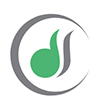Heart Rate Monitors
Heart Rate Monitors: A Tool for Preventing Overheating
Heart rate monitors have been around for a while. But have you ever considered them as a tool to help manage and prevent overheating? 
Put simply: your heart rate will tell you how close you are to overheating.
Traditionally, the risk of overheating has been difficult to anticipate and prevent, leading to anxiety, reduced activity, and feeling a bit out of control. At worst, the risk of overheating can produce emergency situations.
"In 2023, I joined the FIRST patients and family members climbing the Grand Canyon--a strenuous hike in a hot, dry, sunny, and unforgiving environment," explains Dr. Cheryl Bayart, pediatric dermatologist and medical advisor for FIRST. "I was so relieved to see many hikers monitoring their heart rates and using the readings to guide pace and hydration. I am very impressed by this intelligent use of technology and how in touch everyone was with their bodies.”
What makes heart rate monitoring so promising is that it provides objective data about internal physiological responses that aren't apparent from the skin's surface. Heart rate monitoring provides a window into how hard the cardiovascular system is working – to fuel the body for activity and to keep it cool. Monitors can alert you when your heart rate indicates you may be approaching your heat tolerance threshold, allowing for preventive action before symptoms become severe.
Using Maximum Heart Rate as a Safety Gauge
Your personal maximum heart rate is often estimated as 220 beats per minute minus your age. This heart rate maximum serves as an important reference point.
 Heart rate zones represent different intensity levels based on percentages of your maximum heart rate, with lower zones (around 50 to 60 percent) indicating light activity and higher zones (80 to 90 percent and above) representing more cardiovascular effort. For people with ichthyosis, monitoring which zone coincides with overheating symptoms helps establish personal thresholds for when to implement cooling strategies. Reaching moderate or high zones during minimal activity can be a signal that the body is working harder to regulate temperature.
Heart rate zones represent different intensity levels based on percentages of your maximum heart rate, with lower zones (around 50 to 60 percent) indicating light activity and higher zones (80 to 90 percent and above) representing more cardiovascular effort. For people with ichthyosis, monitoring which zone coincides with overheating symptoms helps establish personal thresholds for when to implement cooling strategies. Reaching moderate or high zones during minimal activity can be a signal that the body is working harder to regulate temperature.
"What's particularly valuable about using maximum heart rate as a reference is the personalization," notes Dr. Bayart. "Some patients discover they need to take cooling measures when reaching just 65 percent of their maximum, while others might not experience symptoms until 80 percent. These individualized thresholds provide precise guidance that generic advice simply cannot offer."
Getting Started with Heart Rate Monitors
1. Choose a device with continuous heart rate monitoring. Focus on heart rate functionality rather than skin temperature sensing, which may be less reliable for people with ichthyosis.
2. Calculate your estimated maximum heart rate (220bpm minus your age) and note what percentages correspond to different heart rate zones.
3. Establish your baseline readings by wearing the device during regular activities for at least one week. Pay particular attention to what percentage of your maximum heart rate correlates with early feelings of overheating.
4. Explore custom notifications for heart rate spikes.
5. Keep a simple journal recording any instances of feeling overheated alongside your heart rate data to identify personal patterns.
6. Discuss this data with your doctor if you need help developing personalized guidelines for activity modifications.
7. Discuss this data with your family and support team to establish communication protocols for activity and heat exposure.
The more you track, the more you will learn about yourself and the more empowered your choices can be. For example, your heart rate might stay elevated for longer periods of time in humid places versus dry.
While this technology shows promise, experts emphasize these tools should complement, not replace, your existing care regimen. Proper skincare, hydration, appropriate clothing, and environmental modifications remain essential components of ichthyosis care.
This information is provided as a service to patients and parents of patients who have ichthyosis. It is not intended to supplement appropriate medical care, but instead to complement that care with guidance in practical issues facing patients and parents. Neither FIRST, its Board of Directors, Medical & Scientific Advisory Board, Board of Medical Editors, nor Foundation staff and officials endorse any treatments or products reported here. All issues pertaining to the care of patients with ichthyosis should be discussed with a dermatologist experienced in the treatment of their skin disorder.




